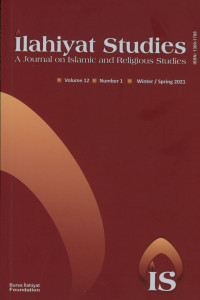Losing Our Space/Madīnah: From the Madīnah of Reality to A Simulation City
Losing Our Space/Madīnah: From the Madīnah of Reality to A Simulation City
Architecture or building a madīnah corresponds not only to constructing what is physical but also to building people and a community. Humans construct the madīnah just as the madīnahs build the people. Quarters (maḥallahs) or madīnahs present not only physical structures but also have an administrative, social, and cultural nature. People who have lost their space have also lost themselves. Indeed, civilizations have been built on madīnahs. The industrialization that started during the 18th century and gained speed during the 19th century brought with it the concept of urbanization. Europe lost its concept of the medieval city and built cities parallel to the positivist, secular, and materialistic approaches of its traditions of thinking. The high-tech process that took place during the 1970s following industrialization transformed the material universe and order into a simulative order. The present study focuses on how space and the city — and hence reality — have been lost by breaking away from the Islamic ḥaḍārah (tamaddun) by way of the Baudrillardian simulation concept.
Keywords:
Space-Humans, Madīnah-Community Reality-Simulation,
___
- Anık, Mehmet. “Aykırı Bir Düşünür Olarak J. Baudrillard ve Gösteriş̧ Amaçlı Tüketim.” Uluslararası Sosyal Araştırmalar Dergisi 9, no. 47 (2016): 441-453. http://dx.doi.org/10.17719/jisr.2016.1391.
- Baudelaire, Charles. Modern Hayatın Ressamı. Translated by Ali Berktay. Istanbul: İletişim Yayınları, 2004.
- Baudrillard, Jean. The Mirror of Production. Translated by Mark Poster. St. Louis, MO: Telos Press, 1975.
- Baudrillard, Jean. For a Critique of the Political Economy of the Sign. Translated by Charles Levin. St. Louis, MO: Telos Press, 1981.
- Baudrillard, Jean. America. Translated by Chris Turner. London & New York, NY: Verso Publications, 1989.
- Baudrillard, Jean. Simulacra and Simulation. Translated by Sheila Faria Glaser. Ann Arbor, MI: The University of Michigan Press, 1994.
- Baudrillard, Jean. The Transparency of Evil: Essays on Extreme Phenomena. Translated by James Benedict. London: Verso Publications, 1995. https://doi.org/10.2307/432045.
- Baudrillard, Jean.The Consumer Society: Myths & Structures. London: SAGE Publications, 1998. https://doi.org/10.4135/9781526401502.
- Baudrillard, Jean. Cool Anılar I-II: 1980-1990. Translated by Yaşar Avunç. Istanbul: Ayrıntı Yayınları, 2002.
- Baudrillard, Jean. İmkânsız Takas. Translated by Ayşegül Sönmezay. Istanbul: Ayrıntı Yayınları, 2005.
- Baudrillard, Jean. Symbolic Exchange and Death. Translated by Iain Hamilton Grant. London: SAGE Publications, 2017.
- Baudrillard, Jean and Jean Nouvel. The Singular Objects of Architecture. Translated by Robert Bononno. Minneapolis: University of Minnesota Press, 2002.
- Bergen, Lütfi. “Medeniyetin Cüzü: Mahalle.” İdeal Kent 2 (2010): 140-168.
- Bergen, Lütfi. Evlerimizi Kaybediyoruz: Yerlilik Meselemiz. Ankara: MGV Yayınları, 2016.
- Bergen, Lütfi. Kenti Durduran Şehir. Ankara: MGV Yayınları, 2016.
- Bergen, Lütfi.Şehir Sünnettir. Ankara: Hitabevi Yayınları, 2016.
- Can, Yılmaz. “H.I-III./M.VII-IX. Y.Y. İslâm Şehri.” Ondokuz Mayıs Üniversitesi İlâhiyat Fakültesi Dergisi 6 (1992): 109-138.
- Cansever, Turgut. “İslam Mimarîsi Üzerine Düşünceler.” Divan: İlmî Araştırmalar 1, no. 1 (1996): 119-146.
- Cansever, Turgut. İslâm’da Şehir ve Mimari. 11th ed. Istanbul: Timaş Yayınları, 2016.
- Dağ, Ahmet. Ölümcül Şiddet: Baudrillard’ın Düşüncesi. Istanbul: Külliyat Yayınları, 2011.
- Dağ, Ahmet. Transhümanizm: İnsanın ve Dünyanın Dönüşümü. Istanbul: Elis Yayınları, 2018.
- Datta, Ayona and Abdul Shaban. Mega-Urbanization in the Global South: Fast Cities and New Urban Utopias of the Postcolonial State. London & New York: Routledge, 2017.
- “Designing Smart Cities.” Accessed August 15, 2018. https://www.designingbuildings.co.uk/wiki/Designing_smart_cities.
- Gane, Mike. Baudrillard’s Bestiary: Baudrillard and Culture. London & New York: Routledge, 2003. https://doi.org/10.4324/9780203415856.
- Lane, Richard J. Jean Baudrillard. London: Routledge, 2000. https://doi.org/10.4135/9781446262313.
- Lefebvre, Henri. Everyday Life in the Modern World. Translated by Sacha Rabinovitch. New York: Harper & Row Publishers, 1971.
- “Living in the Hyperreal Post-modern City.” https://www.designingbuildings.co.uk/wiki/Living_in_the_hyperreal_post-modern_city. Accessed January 30, 2020.
- Price, Andrew. “The Living City vs. The Mechanical City.” Accessed September 9, 2018. https://www.strongtowns.org/journal/2018/5/1/the-living-city-vs-the-mechanical-city.
- Proto, Francesco. “Architecture.” In The Baudrillard’s Dictionary, edited by Richard G. Smith, 17-20. Edinburgh: Edinburgh University Press, 2010.
- Raymond, André. “The Spatial Organization of the City.” In The City in the Islamic World, edited by Salma Khadra Jayyusi, Renata Holod, Attilio Petruccioli, and André Raymond, 47-70. Leiden & Boston: Brill, 2008. https://doi.org/10.1163/ej.9789004162402.i-1500.15.
- Spengler, Oswald. The Decline of the West Vol. I: Form and Actuality. Translated by Charles Francis Atkinson. London: George Allen & Unwin Ltd., 1929.
- Steele, Wendy, Ian McShane, Crystal Legacy, Yolande Strengers, John Handmer, and Sarah Pink. “The Cyborg City: Re-Thinking Urban Resilience through Mobile Communications.” In Proceedings of the SOAC 7 - State of Australian Cities Conference (SOAC 2015), edited by Paul Burton and Heather Shearer, 1-7. Southport: Griffith University, 2016.
- Tunalı, İsmail. Tasarım Felsefesi: Tasarım Modelleri ve Endüstri Tasarımı. 4th ed. Istanbul: YEM Yayınları, 2012.
- ISSN: 1309-1786
- Başlangıç: 2010
- Yayıncı: Bursa İlahiyat Vakfı
Sayıdaki Diğer Makaleler
Meta-Entity (al-Ghayr) and Its Value Metaphysics in al-Māturīdī
The Green Man: What Reading Khiḍr as Trickster Evinces about the Canon
Losing Our Space/Madīnah: From the Madīnah of Reality to A Simulation City
Teaching and Learning the Sciences in Islamicate Societies (800-1700), by Sonja Brentjes
